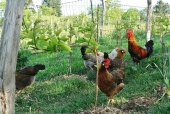
 1
1
















Buy Our Book! Food Web: Concept - Raising Food the Right Way. Learn make more food with less inputs
Off Grid Homesteading - latest updates and projects from our off grid homestead








Simplicity is the ultimate sophistication.








Beautiful Nazareth Farms farm site
This Happy Homestead homestead blog




Living off-grid down on the border of Mexico and lovin' it!
Blog: http://www.timelessranchtx.com




Beautiful Nazareth Farms farm site
This Happy Homestead homestead blog












How permies.com works
What is a Mother Tree ?




















Beautiful Nazareth Farms farm site
This Happy Homestead homestead blog














Jeremey Weeks wrote:I'm sure this thread will catch Adam's eye--he sprouts seeds for his poultry.
Order copies of my book, Dairy Farming: The Beautiful Way at
www.createspace.com
Help spread the word! Thanks!
struggle - hustle - soul - desire









 Farming is hard enough work as it is.
Farming is hard enough work as it is.Order copies of my book, Dairy Farming: The Beautiful Way at
www.createspace.com
Help spread the word! Thanks!
struggle - hustle - soul - desire




Adam Klaus wrote:No, it doesnt dry out, because it is still in the bucket. Maybe a thin layer on top dries out, but it still seems to sprout fine. I live in a really arid climate too.
Easy is good.Farming is hard enough work as it is.
Simplicity is the ultimate sophistication.




Beautiful Nazareth Farms farm site
This Happy Homestead homestead blog




Beautiful Nazareth Farms farm site
This Happy Homestead homestead blog

















|
It's exactly the same and completely different as this tiny ad:
The new permaculture playing cards kickstarter is now live!
https://www.kickstarter.com/projects/paulwheaton/garden-cards
|





